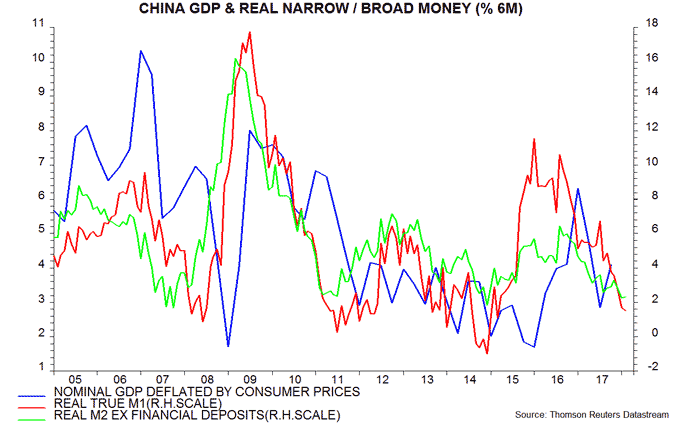Chinese activity firmer but money trends still signalling weakness
Stronger Chinese economic activity numbers for January-February may partly reflect a holiday timing effect but are also consistent with resilient monetary growth in mid-2017. More recent monetary weakness suggests a progressive loss of economic momentum over the remainder of 2018. Money growth measures were little changed in February but a significant rebound is unlikely without policy easing.
Most activity series came in above consensus expectations in January-February. Annual growth of industrial production, for example, rose to 7.2% from 6.2% in December. The late timing of the New Year holiday may have contributed to this pick-up, by pushing some of the usual production loss into March. The New Year also occurred in mid-February in 2015, 2010 and 2007 – annual production growth was lower in March than in January-February in all three cases, by an average of 1.6 percentage points, i.e. growth may fall back to or below its December level this month.
Current economic resilience, however, is consistent with earlier monetary trends. Six-month growth of real narrow money remained solid by historical standards through September 2017, before falling sharply over October-January – see chart. A further slight decline in February reflected a pick-up in six-month consumer price inflation, probably also influenced by the late New Year. Allowing for a typical nine-month lead, this suggests a significant weakening of economic data from mid-2018.

Broad money trends are similarly downbeat: six-month growth of real broad money was unchanged in February near the bottom of its range in recent years.
Business surveys have been mixed recently but are probably peaking. The PBoC’s first-quarter survey of 5000 enterprises reported a small decline in the domestic orders index and a levelling out of the export orders index, after adjusting for seasonal movements – second chart.


Reader Comments